Walker Multi Anvil
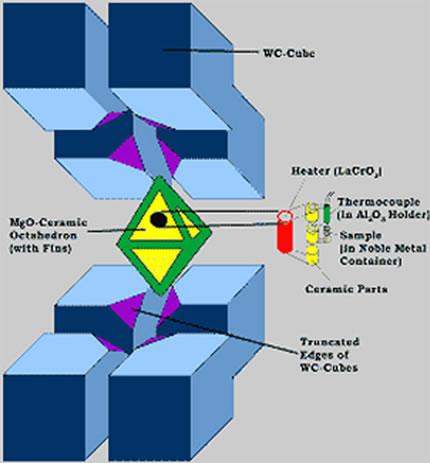
Multi-anvil systems can achieve pressuresof 250 kbar and temperatures to 3000°C. The sample is placed in a hole (purplecolored area figure A) within a pressure medium shaped into an octahedron andfabricated from alumina, pyrophyllite or some other ceramic material, as shownin the opened view to the left. The faces of the octahedron seat against thetruncated corners (orange colored area figure A) of eight tungsten carbide (WC)cubic anvils. The cubes in turn are nested within split-spherical orcylindrical seats fabricated from tool steel and sectioned into segments thatfit into a massively supported guide-block. Until recently, these systems wereheavy and cumbersome, requiring very large presses and a considerable effort tooperate them up to their design pressures.
The main obstacles to research on bulkmaterials at pressures of 50-250 kbar have been eliminated as a result ofsimplifications to multi-anvil design and technique recently introduced by Dr.David Walker at the Lamont-Doherty Earth Observatory of Columbia University. Asillustrated in the schematic cross-section below, and in the photographs of theWalker module, a cylindrical cluster of wedges is used to seat the tungstencarbide anvils (C). The wedges are loose and free to float within theirsupporting ring. Massive support of the cluster is not used; rather, theelastic strain during loading is taken up directly by the supporting ring.
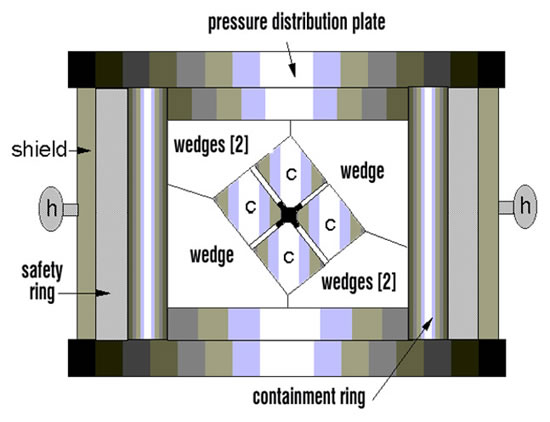
The main obstacles to research on bulkmaterials at pressures of 50-250 kbar have been eliminated as a result ofsimplifications to multi-anvil design and technique recently introduced by Dr.David Walker at the Lamont-Doherty Earth Observatory of Columbia University. Asillustrated in the schematic cross-section below, and in the photographs of theWalker module, a cylindrical cluster of wedges is used to seat the tungstencarbide anvils (C). The wedges are loose and free to float within theirsupporting ring. Massive support of the cluster is not used; rather, theelastic strain during loading is taken up directly by the supporting ring.
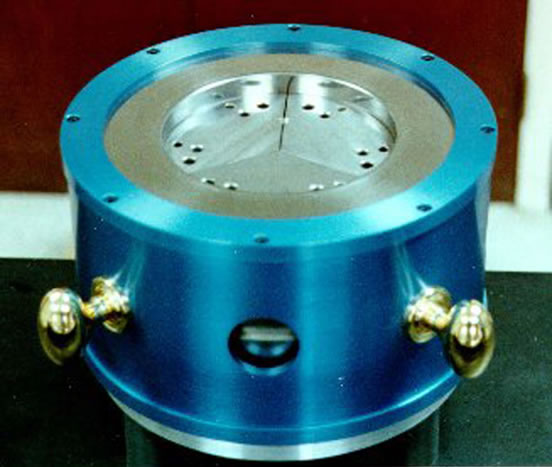
Module with upper pressure plate removed,showing the top cluster of three cylindrical wedges installed over the WCcubes. Knobs mounted on outer shield permit easy maneuvering for positioning ofthe module in the press. Port between knobs provides access for strain gauges.
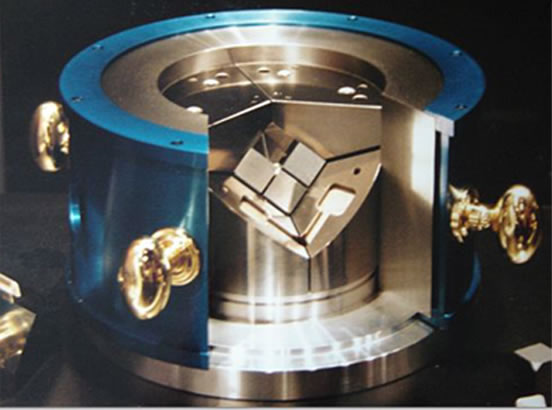
Illustration of the internal configurationof the Walker Multi-Anvil module (this unit is on display at the SmithsonianInstitution's Janet Annenberg Hooker Hall of Geology, Gems and Minerals at theNational Museum of Natural History.
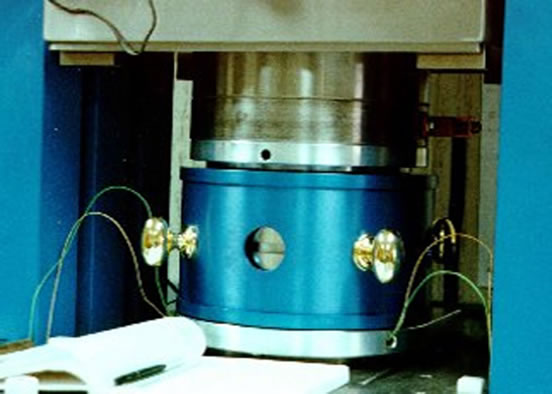
Module, with pressure plates installed, inthe press. Wires lead to internal module connectors for attachment of sampleassembly thermocouple(s). Power for the sample heater passes through the cubesand top and bottom pressure plates, which are electrically isolated.
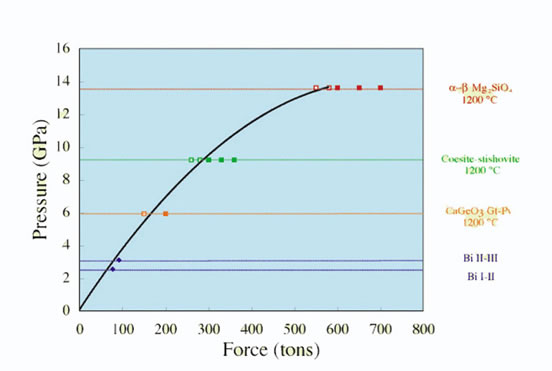
This graph shows the pressure calibrationfor the 14/8 (ram force vs. the pressure of "fixed"transitions). The Walker module is usedfor achieving pressures up to 25 GPa. In this device, six anvil "wedges"press on 8 cubes which in turn press on an octahedra press medium. The press is calibrated using a variety ofsample assemblies, using both castable ceramic and semi-sintered ceramicpressure media. This configuration isused at Dr. Paul Asimow's lab at CalTech. The 14/8 ass'y is configured as follows:
14 mm edge length octahedron made ofsemi-sintered MgO plus 5 wt% Cr2O3
Stepped LaCrO3 heater
Pyrophyllite gaskets with a cross sectionof 2.8 x 4.5 mm
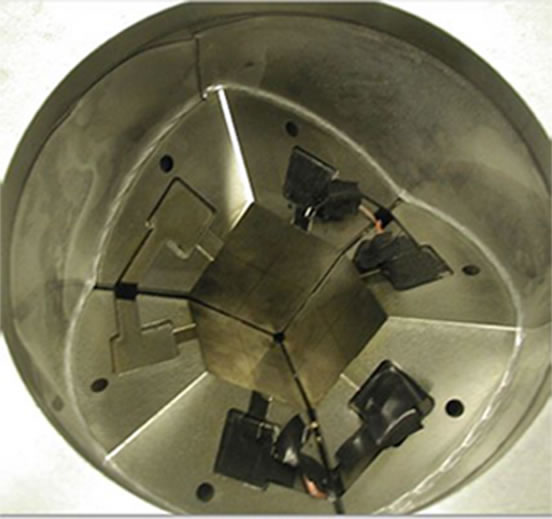
The interior of the Walker Multi-Anvil isshown with the anvils removed
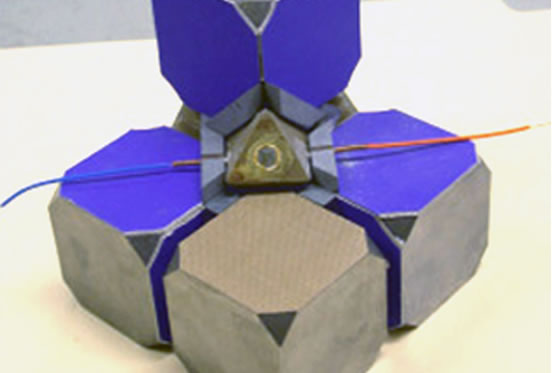
Walker module with view of (1")tungsten carbide anvils positioned on the lower set of wedges. As shown inFigure A, the sample octahedron sits at the center of symmetry of the cubes.
8 Walker Multi-Anvil cubes (5 shown)compress the octahedron sample. Gasketsare made of pyrophyllite
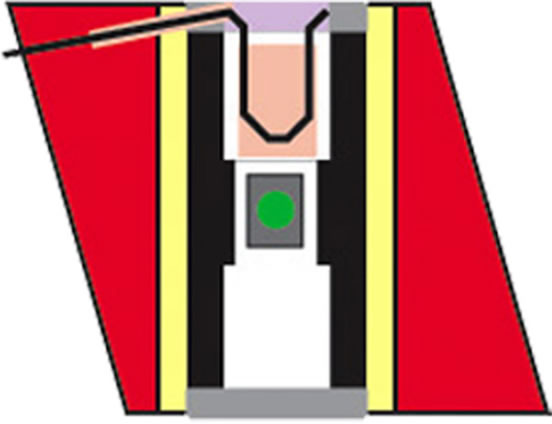
Cross section of octahedron shows:
- MgO pressure medium (red)
- ZrO2 insulator (yellow)
- Stepped LaCrO3 heater (black)
- Mo rings (grey)
- MgO insulating parts (white)
- Sample (grey/green)
- Thermocouple wire








